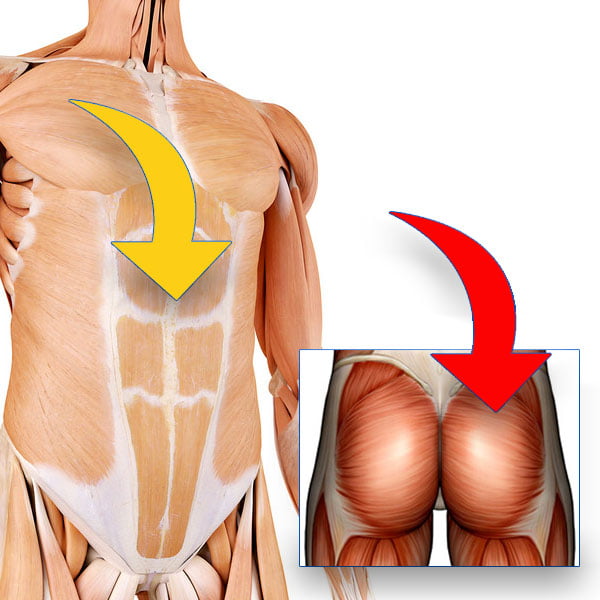The Volatile Relationship Between the Gluteus Maximus & the Abdominals
DESCRIPTION
The relationship between the Gluteus Maximus and the Abdominals is indeed complex, and understanding their dynamics requires diving deep into the realm of biomechanics. These two muscle groups, although located in different parts of the body, play a crucial role in our day-to-day movements and overall stability.
To comprehend their collaboration, we have to examine the biomechanics of the human body. The Gluteus Maximus, being the largest muscle in the buttocks, is responsible for extending and externally rotating the hip joint. This muscle provides power for actions like standing up from a seated position, climbing stairs, and running.
On the other hand, the Abdominals, a group of muscles in the front of the abdomen, are primarily involved in flexing and stabilizing the spine. These muscles include the Rectus Abdominis, commonly known as the “six-pack,” and the Obliques, which aid in twisting motions and maintaining proper posture.
When these muscle groups work as a team, they create balance and harmony in our movements. For example, during activities like squatting or deadlifting weights, the Gluteus Maximus contracts to extend the hips while the Abdominals contract to stabilize and protect the spine. This synchrony ensures a strong and safe execution of these exercises.
However, there are instances when the Gluteus Maximus needs to take a step back and allow the Abdominals to take the lead. One such example is during core exercises like planks or sit-ups, where the focus is on strengthening the Abdominals while minimizing excessive involvement of the Gluteus Maximus.
From a biomechanical perspective, this imbalance occurs because certain movements predominantly engage one muscle group over the other. For instance, sitting for prolonged periods weakens the Gluteus Maximus and tightens the hip flexors, leading to an anterior tilt of the pelvis. This postural distortion puts excessive stress on the lower back and forces the Abdominals to compensate for the lack of Gluteus Maximus activation, potentially causing lower back pain or injuries.
To restore the balance, it is crucial to train both muscle groups effectively. Strengthening the Gluteus Maximus with exercises like squats, lunges, and hip thrusts can help counteract the effects of prolonged sitting and enhance its ability to contribute to overall stability. Meanwhile, incorporating movements that specifically target the Abdominals, such as crunches, planks, and Russian twists, can further develop their strength and endurance.
Recognizing the intricate relationship between the Gluteus Maximus and the Abdominals is essential for both athletes and individuals seeking to maintain optimal function and prevent injuries. By understanding their roles and training them in a balanced manner, we can ensure a harmonious partnership between these muscle groups, resulting in improved biomechanics and overall physical well-being. So, the next time you hit the gym or engage in any physical activity, remember the importance of harnessing the power of the Gluteus Maximus and the Abdominals as a cohesive team.



